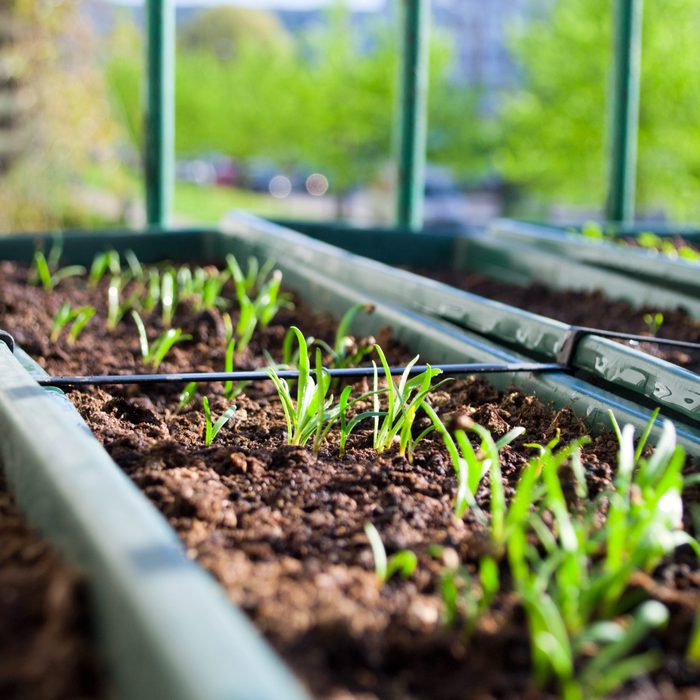
Ready, set, grow!
Looking for the easiest vegetables to grow at home? You’re not alone. The COVID-19 pandemic, along with increased interest in eating organic, fresh, healthy foods, has led to a boom in the gardening sector. With more people buying seeds and plants, some gardeners have had trouble finding their favorites, sparking fears of a shortage. But don’t panic: Seed companies are ramping up to meet demand, though they recommend buying early to get exactly what you want. If the varieties you want for your container garden or backyard are sold out, you’ll still be able to find plenty of options until they’re back in stock.
Whether you’re a first-timer or an experienced green thumb, you’ll want to plant these delicious, surprisingly simple-to-grow veggies. They’ll thrive in your yard or on your patio, and you won’t need to put in a ton of work. (Really!) If you have a big sunroom or enclosed porch, you can also find delicious fruits to grow indoors.
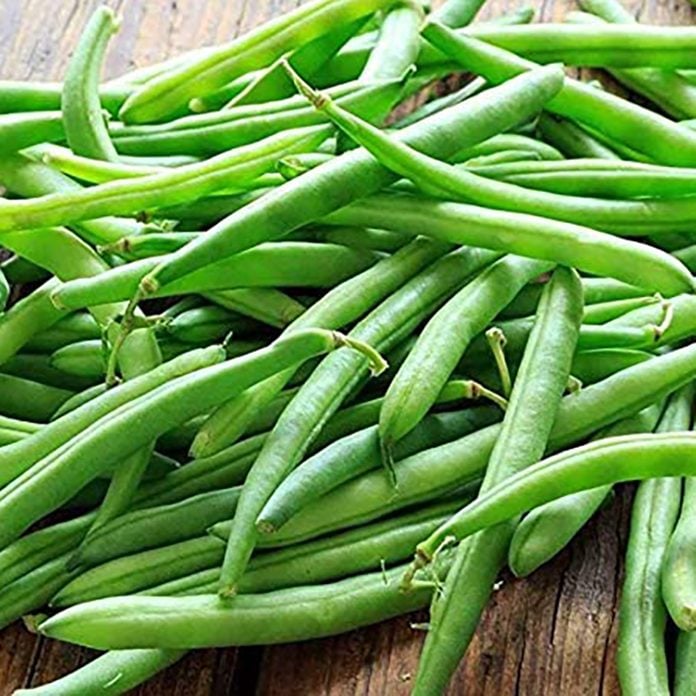
Grow beans in a snap
You might be surprised to learn that you don’t need a big garden to grow green beans. Bush beans are space savers, but you can also grow beans vertically by choosing pole varieties and training their vines onto a trellis, fence, or other support. Full sun, regular water, and moderately rich soil will pay off in a plentiful harvest, and beans don’t need much fertilizer, although they’ll benefit from a side-dressing of compost in the middle of the season if you didn’t work a lot of compost into the soil before you planted. Check your seed packet to know approximately when your variety will be ready to harvest, and keep the plants picked so they’ll continue to produce. Freeze or can your haul to enjoy these delicious green bean recipes all year long.
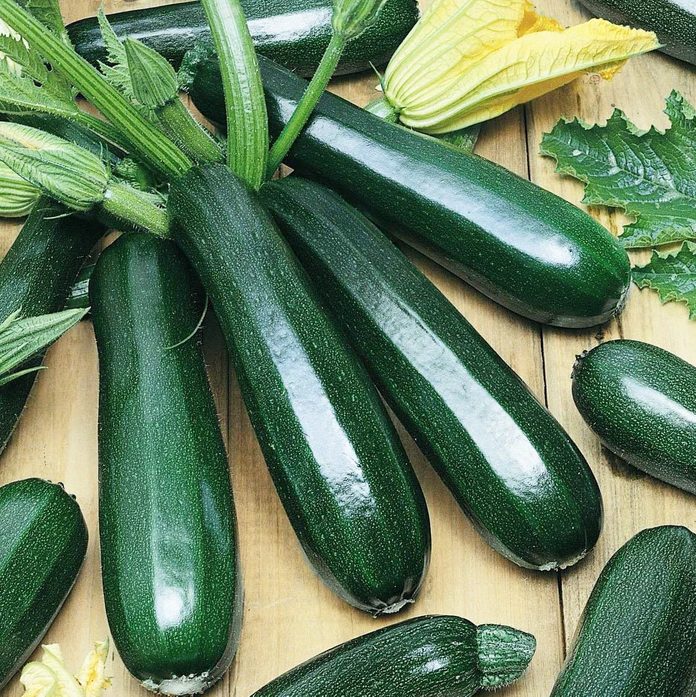
Plant prolific zucchinis
Zucchinis have a reputation for being so easy to grow, and so prolific, gardeners joke about having to leave their extras on a neighbor’s doorstep, ring the bell, and run away. Just one plant can yield six to ten pounds of zucchinis in a single growing season! Plant the seeds directly in your garden or a large container once the soil warms up to at least 60 degrees Fahrenheit. The plants need full sun and moist, easily draining soil amended with compost. Give them an inch of water each week if there’s no rain, and harvest when the fruits are small (botanically speaking, zucchinis are fruits) and the skins are tender.
You can freeze zucchinis or bake them into bread, slice them into strips for pasta, grate them for fritters, or chop them into vegetable chili. They’re also delicious when you know how to roast vegetables until they’re crispy and caramelized.
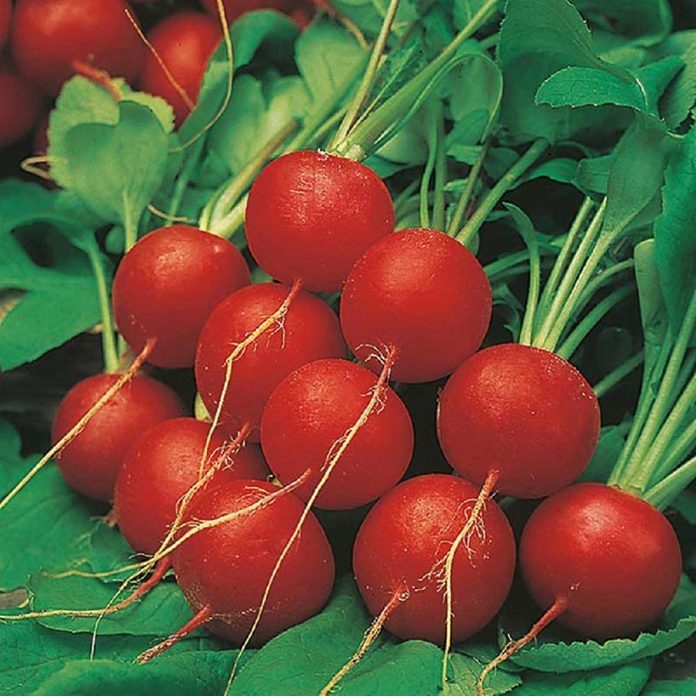
Raise crunchy radishes
Many gardeners love fresh radishes for their peppery bite and the crunch you get when you bite into them, but these root veggies are good for more than just eating. Because the seeds sprout quickly—often within a week—you can use them in the garden to mark the rows of other crops that don’t come up as fast. Plus, they are truly some of the easiest vegetables to grow.
Simply sow the seeds outdoors about 1/2 to one inch deep while the weather is still cool. Wait ten days and plant again for a continuous crop until the summer heat arrives, or sow more radishes when the temperatures drop in fall. They’ll thrive in a sunny spot that has loose soil amended with organic matter. Thin the seedlings to two inches apart so their roots won’t be crowded, and keep the plants evenly moist. Some varieties are ready to harvest just three weeks after planting.
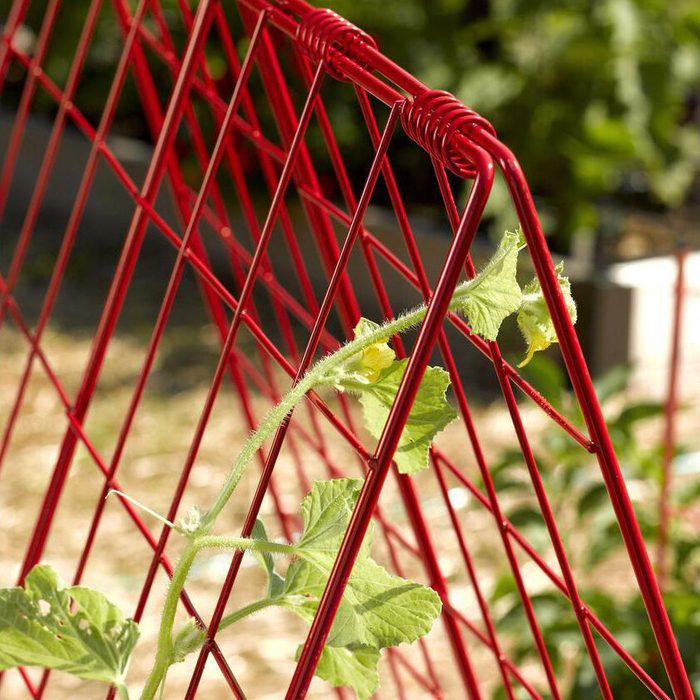
Cultivate cucumbers
Like zucchinis, cucumbers are prolific and easy to grow. Just give them a spot with moist, fertile soil and lots of sunshine. Start the seeds when the soil warms up to at least 60 degrees Fahrenheit, tucking them an inch deep into the ground. They’ll sprout in a few days. Keep them happy with regular water, and, if you didn’t work a lot of organic matter into the soil before you planted, side-dress them with a balanced, soluble fertilizer when the fruits set. The cucumbers are ready to harvest when they’re still small and the skins are tender. To keep a steady supply for the table, make successive plantings.
If you’re short on space, train vining cucumber varieties onto a support like a fence or a trellis, or plant a bush variety in a container or raised bed. Use your cucumbers in salsas, salads, gazpacho, and smoothies, or turn them into pickles. Wait—is a cucumber a fruit or a vegetable?
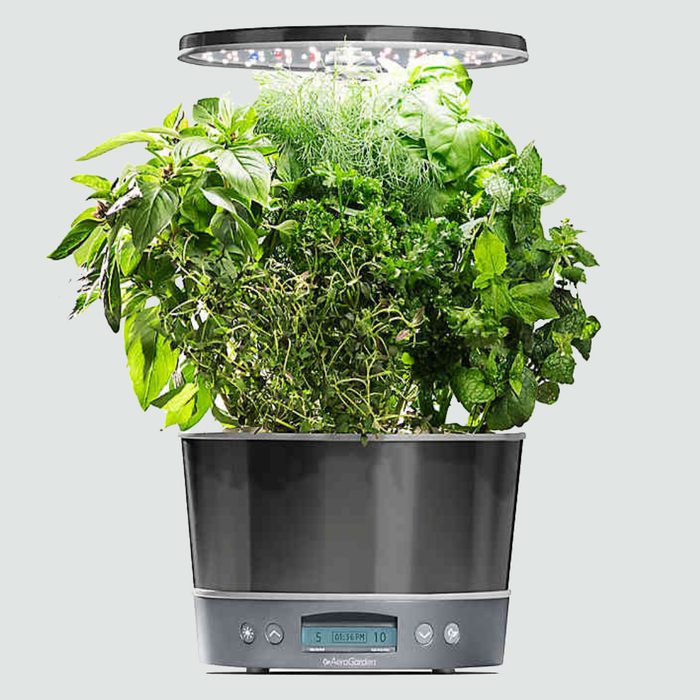
Start sweet peppers indoors
Some seeds take longer than others to germinate, and if your growing season is short, you’ll want to sow them indoors to get a head start on the season. Sweet peppers, for example, are among the easiest vegetables to grow, but they can’t take the cold and should be started eight to ten weeks before your last spring frost.
The AeroGarden soil-free garden system is hydroponic, which means your plants grow in water mixed with nutrients, and it uses pre-seeded pods to grow dwarf peppers or other small veggies and herbs year-round. The unit has a stainless steel finish, fits on most kitchen counters, and comes with a built-in sensor to turn the included grow light on and off, as needed. The digital display also has a vacation setting, so your plants can keep growing even when you’re away from home.
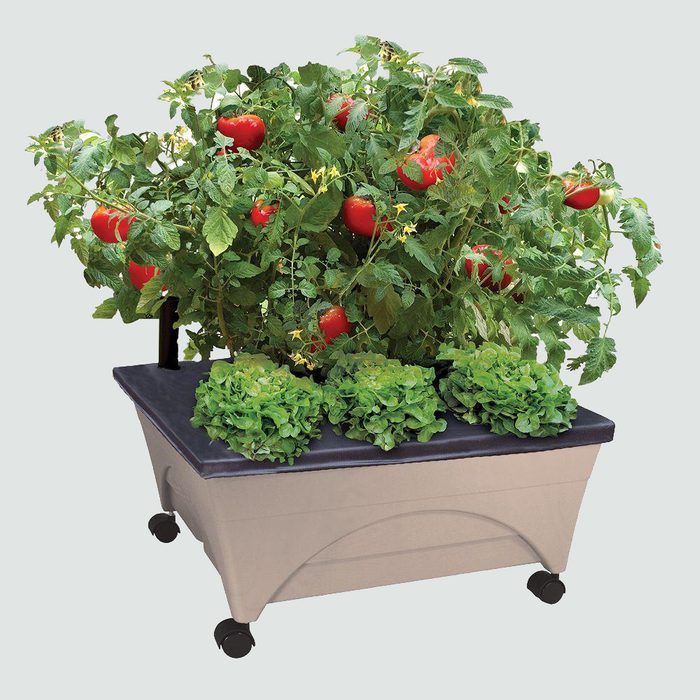
Plant tasty tomatoes
The hardest thing about growing tomatoes might be choosing your favorite kind. There are cherry tomatoes, grape tomatoes, heirlooms with rich flavors, Romas for stews, pasta, and sauces, and hearty beefsteaks. Gardeners in cool regions may want to start with transplants to save time over growing tomatoes from seeds. The plants need full sun and soil that drains easily. For best results, your soil should contain lots of compost and be slightly acidic, with a pH of 6.2 to 6.8. As the plants grow, apply a fertilizer recommended for tomatoes as directed on the label. This raised garden bed with an automatic watering system makes it easy to grow compact or patio-type tomatoes, even in a small space. Now that you know how to grow them, it’s time for the ultimate question: Are tomatoes a fruit or a vegetable?
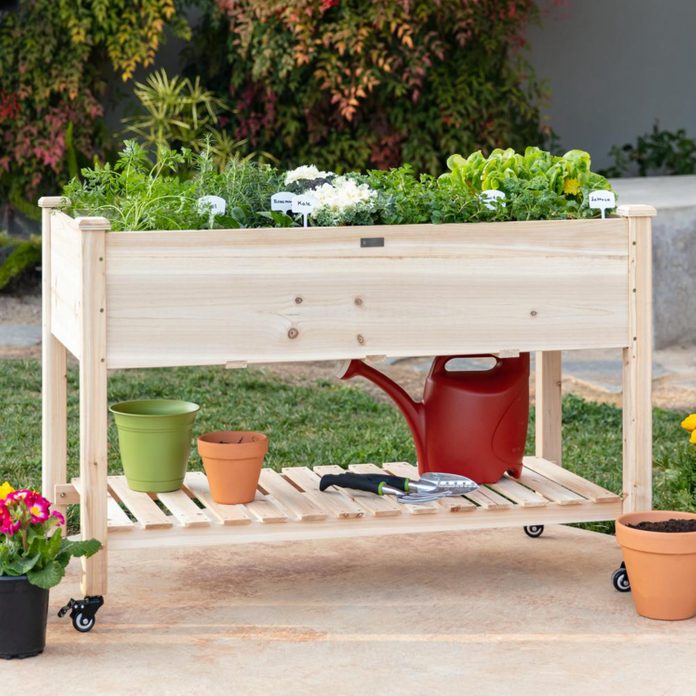
Sow lettuce for salads
Lettuces are great for beginning gardeners, and they’re also some of the easiest vegetables to grow at home. They grow fast, take full sun but tolerate some shade, and can be tucked between other fruits and veggies or into containers. They’re also available in lots of tasty, colorful varieties. If you don’t have an ideal garden spot—for example, your soil contains a lot of clay or rocks—use a raised bed or an elevated planter instead. You can fill it with some of the other easiest vegetables to grow, too, such as onions and patio tomatoes. Add good-quality planting soil, and you won’t have to dig. The loose soil will also make it easy to pluck any weeds that pop up.
Sow your lettuce seeds in early spring or fall, and keep the plants watered regularly. Lettuce started in spring will last until the summer heat arrives, and fall-sown lettuce will grow until a killing frost. Harvest the outermost leaves first, but don’t pull up the plants so they can keep producing.
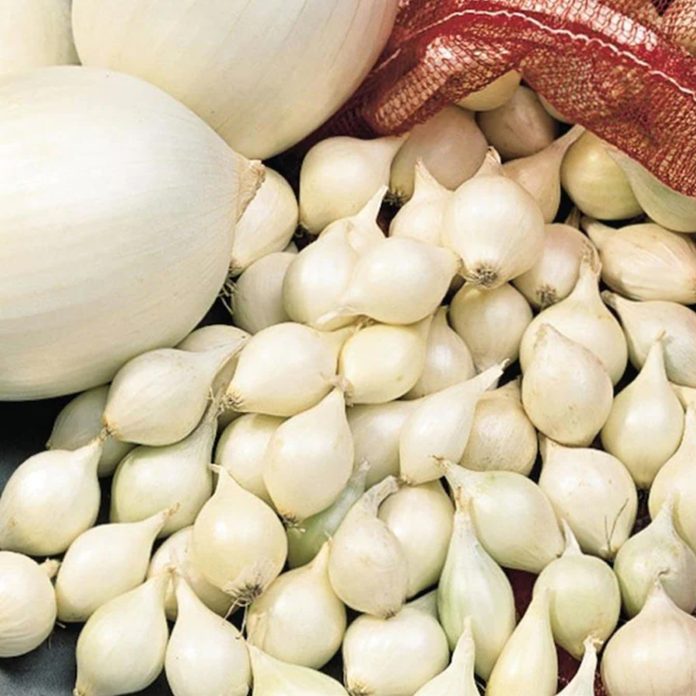
Set out onions
Make a little hole in the ground, tuck in a bare-root onion seedling or an onion bulb, and stand back. In two or three weeks, the seedlings will be ready to pull and use as green onions. Bulbs take longer, about three or four months, to develop into full-size onions for harvesting. Mature onions will let you know they’re ready when their tops turn yellow and bend over. Just brush off the soil and put the onions, with the tops still attached, in a warm, dry, well-ventilated place to cure for a week to ten days. Then remove the top foliage and roots and store the onions in a cool, dry, dark place until you’re ready to use them.
Slice and fry them for onion rings, chop them for salsas and salads, or grill, roast, or pickle them. Chopped or sliced onions can be stored in sealed containers for up to seven days. And with a few simple tricks, you can keep fruits and vegetables fresh longer. (Wait until you see the one for onions!)
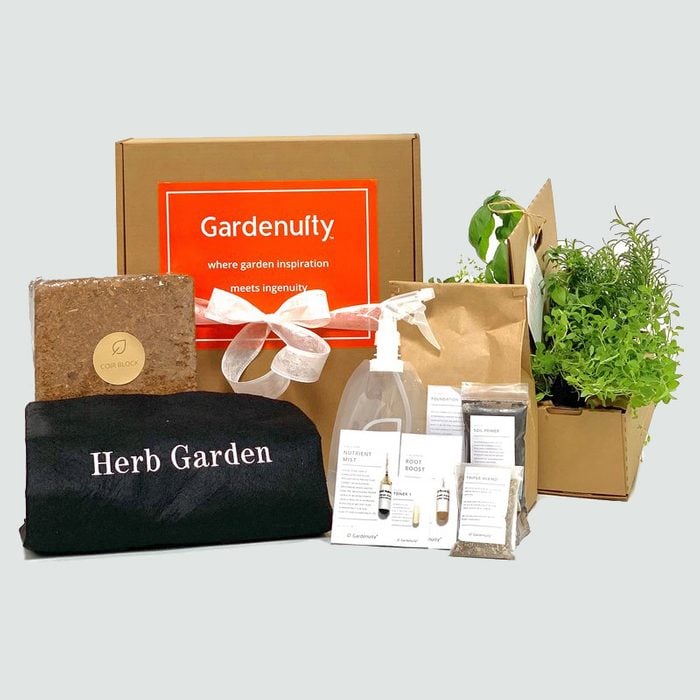
Fill a windowsill with herbs
This herb garden makes a thoughtful gift for a housebound friend. It’s also fun for kids and adults who enjoy gardening. This set from Gardenuity comes with rooted herbs selected especially for the gardener’s region, a five-gallon grow bag, some compost, soil primer, and micronutrients for the plants, among other items. It includes a “Grow Pro” membership, so the user can get support from gardening experts, garden weather alerts, watering and harvesting tips, and more. Although the types of herbs will vary depending on your location, you might receive basil to make into fresh pesto, mint to steep for tea, or dill to flavor homemade pickles. Many are easy to grow, so you may end up with more than you expect!
Want more? Check out these indoor herb garden kits anyone can grow at home.
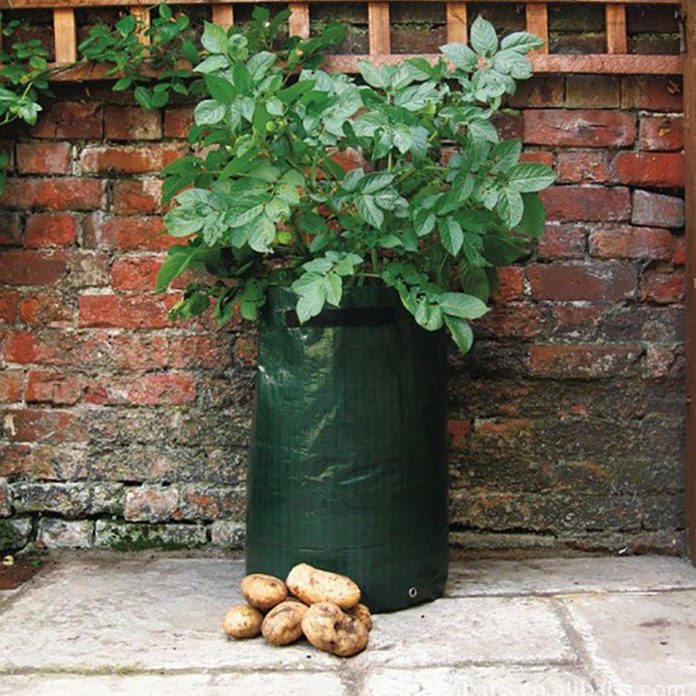
Grow a bagful of potatoes
Humble, nutritious potatoes rank high among the easiest vegetables to grow, and they’re a particularly good choice for beginning gardeners, especially when you plant them in grow bags filled with good potting soil and compost. Start with seed potatoes that haven’t been treated to resist sprouting. Cut them into chunks, with two eyes per chunk, and let them dry overnight before planting them. Then give them full sun and regular water. Add more soil to the bag when the plants are about eight inches tall, leaving the top set of leaves uncovered. Add more soil when the plants grow another eight inches tall, and repeat this process until the bag is full. When the foliage turns yellow, stop watering, and wait about a week before you dig up the potatoes with your gloved hands. Many grow bags are reusable and available in different sizes.
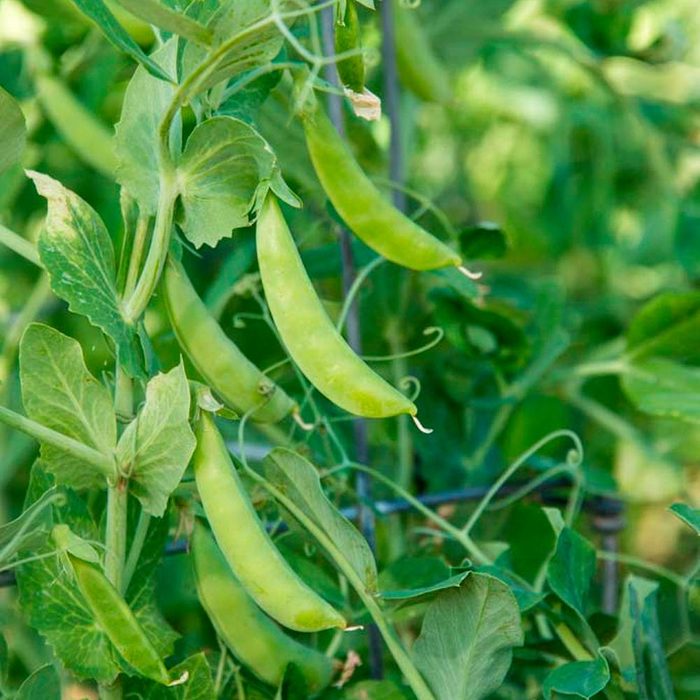
Plant a bushel of peas
There are lots of delightful types of peas. Choose disease-resistant varieties and you won’t need to do much more than plant them, water them regularly, and harvest them. Start your peas in cool, spring temperatures, before the hot weather arrives. For a fall crop, sow pea seeds in late summer, giving them some shade and extra water until the mercury drops again. Sow the peas in wide rows, covering them in spring with an inch of soil and planting two inches deep for a fall crop. They don’t usually need fertilizer, but they do need a deep, weekly watering if rain is scarce.
For best results, grow your peas on a trellis or other support, or choose a dwarf variety with short vines that don’t need staking. Read your seed packet to know when to harvest, and pick often so the plants will keep producing. Fresh peas have the best taste, but you can freeze or dry them to use later.
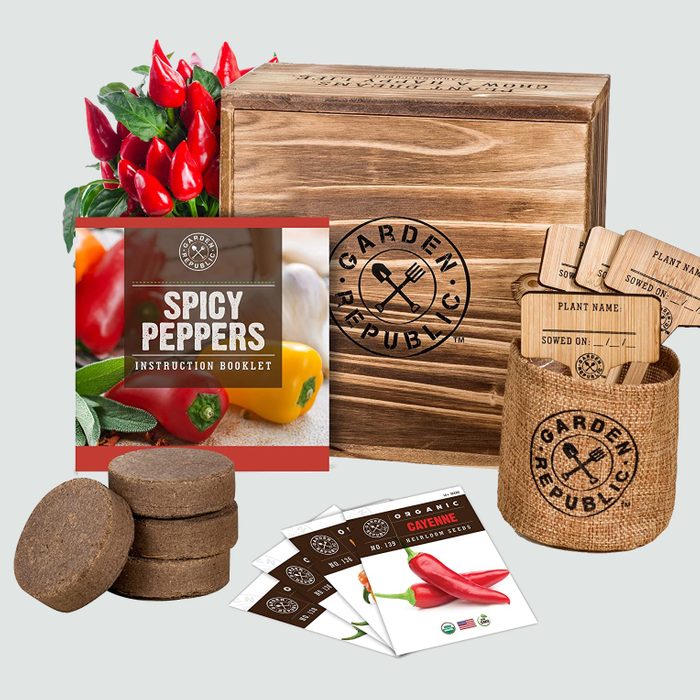
Grow spicy peppers for fiery flavor
They say variety is the spice of life—well, so are jalapeños, habaneros, and other spicy peppers. Start your pepper seeds indoors in the soil discs that come in Garden Republic’s Pepper Seed Starter Kit, and when they sprout, move the seedlings into the fabric grow bags. Use the box as a tray to hold them. When the peppers are a couple of inches tall, and the danger of frost in your area has passed, transplant them into a garden spot that gets full sun. Then use the scissors from the kit to harvest the peppers when they’re the size you want.
Spicy peppers don’t just add heat and flavor to your foods. They also contain capsaicin, which is thought to act as an antioxidant to help fight infection and prevent some types of heart disease.
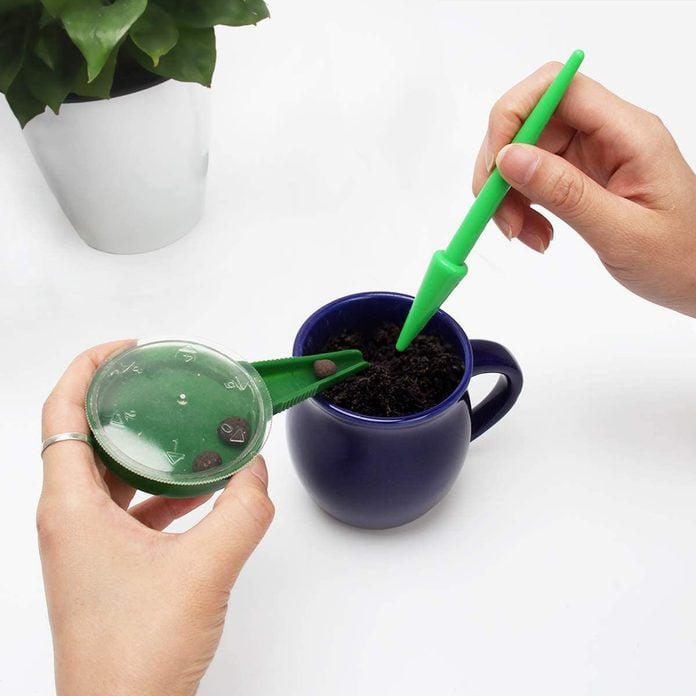
Choose carrots for crunch
Fresh carrots are packed with nutrients, and these low-calorie veggies are great to tuck into kids’ lunches, slice for salads, or munch when you’re on a diet.
Because carrots seeds are tiny, it’s best to sow them directly into the garden. They need loamy, sandy soil that has been loosened to about one foot deep. Remove any rocks, sticks, and other debris, and plant the seeds while the weather is cool. Grow your carrots in a raised bed if your soil has a lot of rocks or clay. To space the seeds evenly, distribute them with a special tool like an adjustable seed dispenser, or put down strips of carrot seed tape in straight rows in your garden. Keep the soil moist and be patient. The seeds may take two or three weeks to sprout, so you might want to plant some fast-growing radishes to mark the carrot rows. Pull the carrots while they’re still on the small side for the best flavor and texture.
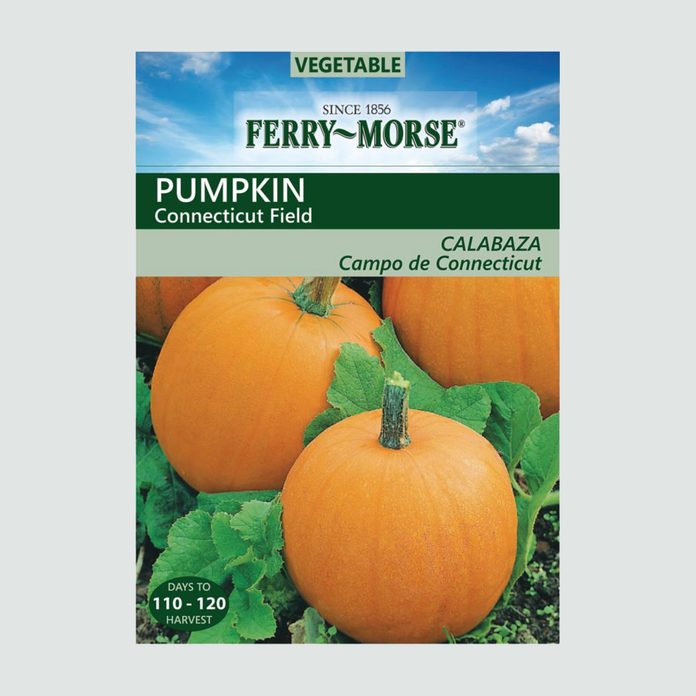
Raise plump pumpkins
It’s fun to carve pumpkins for Halloween or use them to decorate your porch in the fall alongside pots of chrysanthemums, pansies, and other flowers. They’re also nutritious and delicious when baked into pies and muffins or roasted to make hearty soups. Need some inspiration on how to use them? Check out these fresh pumpkin recipes you’ve probably never tried before.
For best results, choose a small variety if you plan to cook your pumpkins. Plant a mammoth or large variety if you want a huge grinning (or scowling) jack-o’-lantern. Pumpkin seeds are big enough for even little hands to hold, so let the kids help you plant them. Wait until there’s no danger of frost to sow them directly into the garden, or start them indoors and transplant them later into a sunny spot. They need lots of room for their vines to grow and plenty of compost worked into the soil. Fertilize and water them regularly, and read your seed packet to know when to harvest.
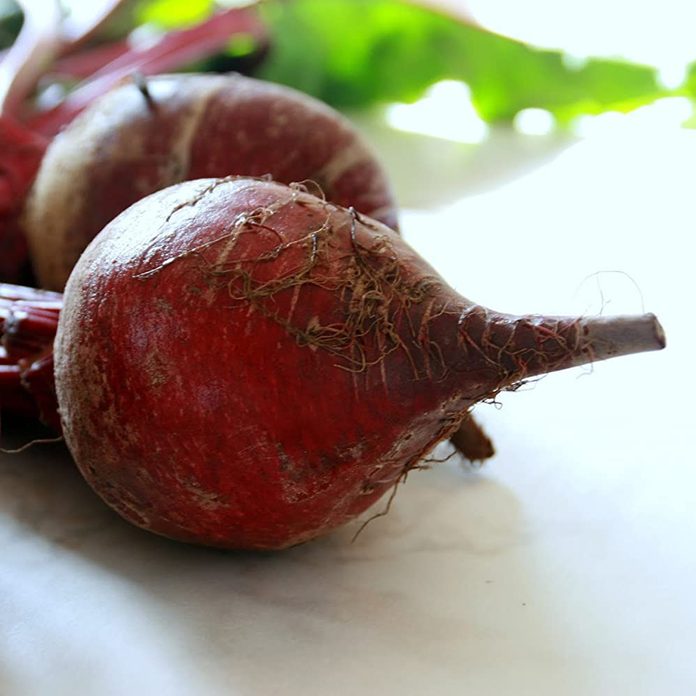
Grow a bumper crop of beets
Most of the easiest vegetables to grow at home need a sunny garden spot, but undemanding beets can grow in partial shade if that’s all you have. They’re a good source of antioxidants and anti-inflammatories, and they may boost eye health and lower the risk of heart disease. In fact, you may be surprised to find there are many health benefits of beets.
Like carrots and other root crops, they need loosened soil that drains easily. Sandy soil is best. They grow fast, so start the seeds early, directly in the garden. Hot weather will make them mature too fast and become tough and woody. Fortunately, they like cool weather, so you can plant them in early spring or four to six weeks before your first fall frost. Give the plants regular water if there’s not at least one inch of rain each week, and harvest them when they’re at least the size of golf balls. Pick the green tops, too, and cook them until they’re tender for a healthy side dish. Now that you’re a wiz in the garden, check out the houseplants that anyone can grow. (Really, anyone!)
Sources:
- Breck’s: “The Rise in Gardening Retail During COVID-19”
- Modern Farmer: “Be Prepared for a Possible Seed Shortage”
- The Old Farmer’s Almanac: “Gardening”
- The Kitchn: “Here Is Why Your Zucchini Plant Produces So Much”
- DIY Network: “Radish Companion Planting”
- Burpee: “Garden Advice Center”
- Bonnie Plants: “How to Grow”
- Alden Lane Nursery: “Grow Potatoes in Grow Bags”
- Gardening Know-How: “Growing Beets — How to Grow Beets in the Garden”
